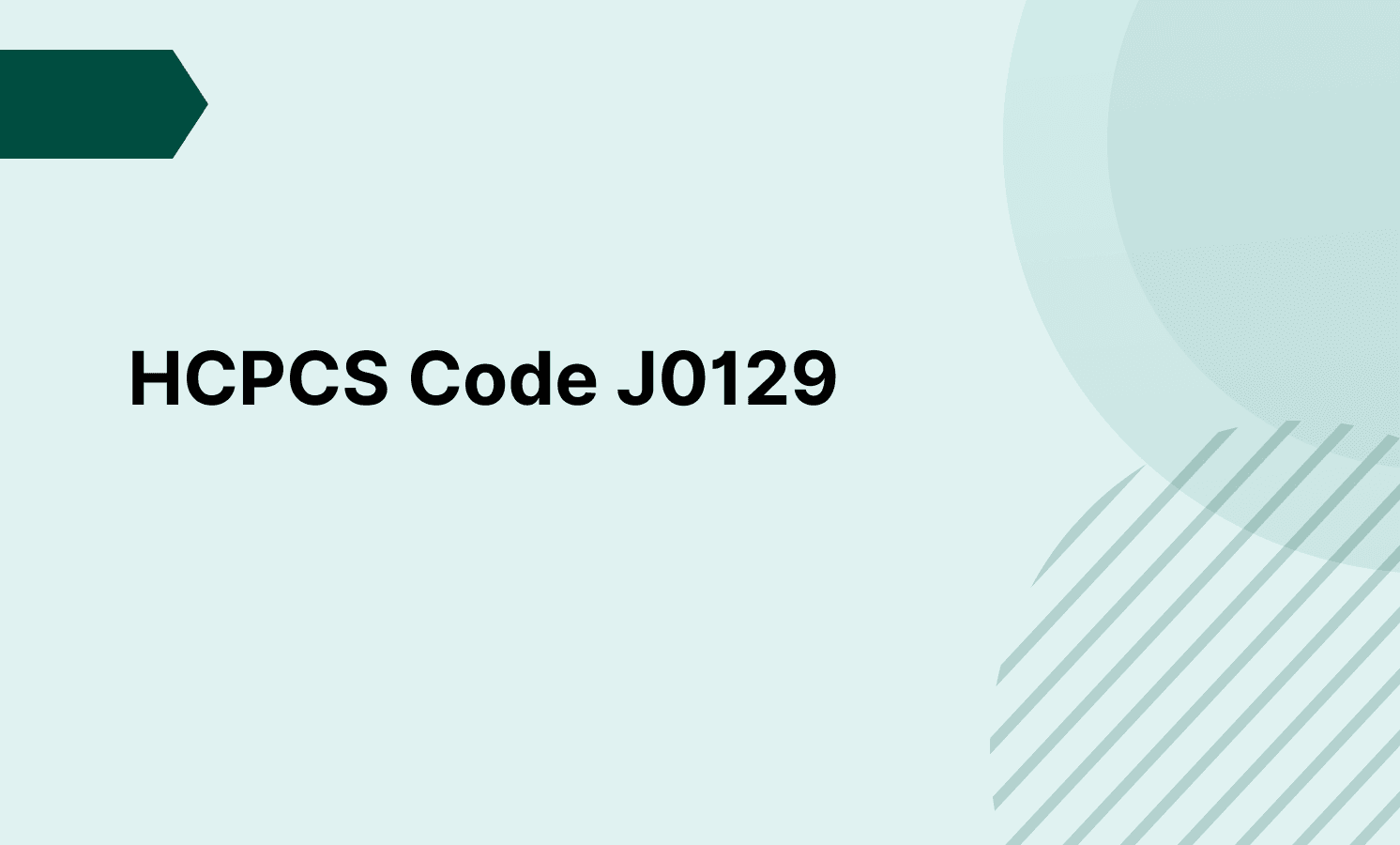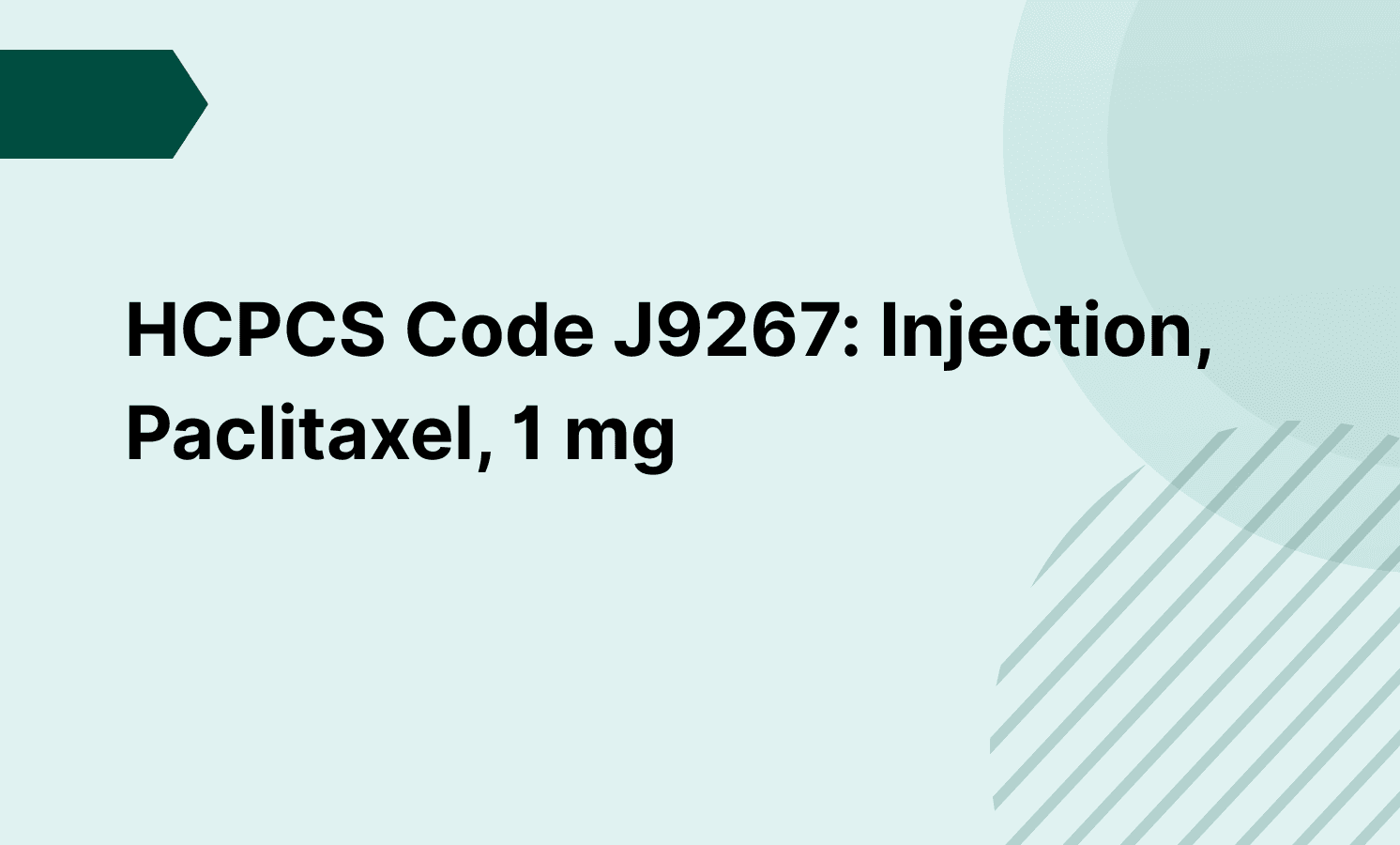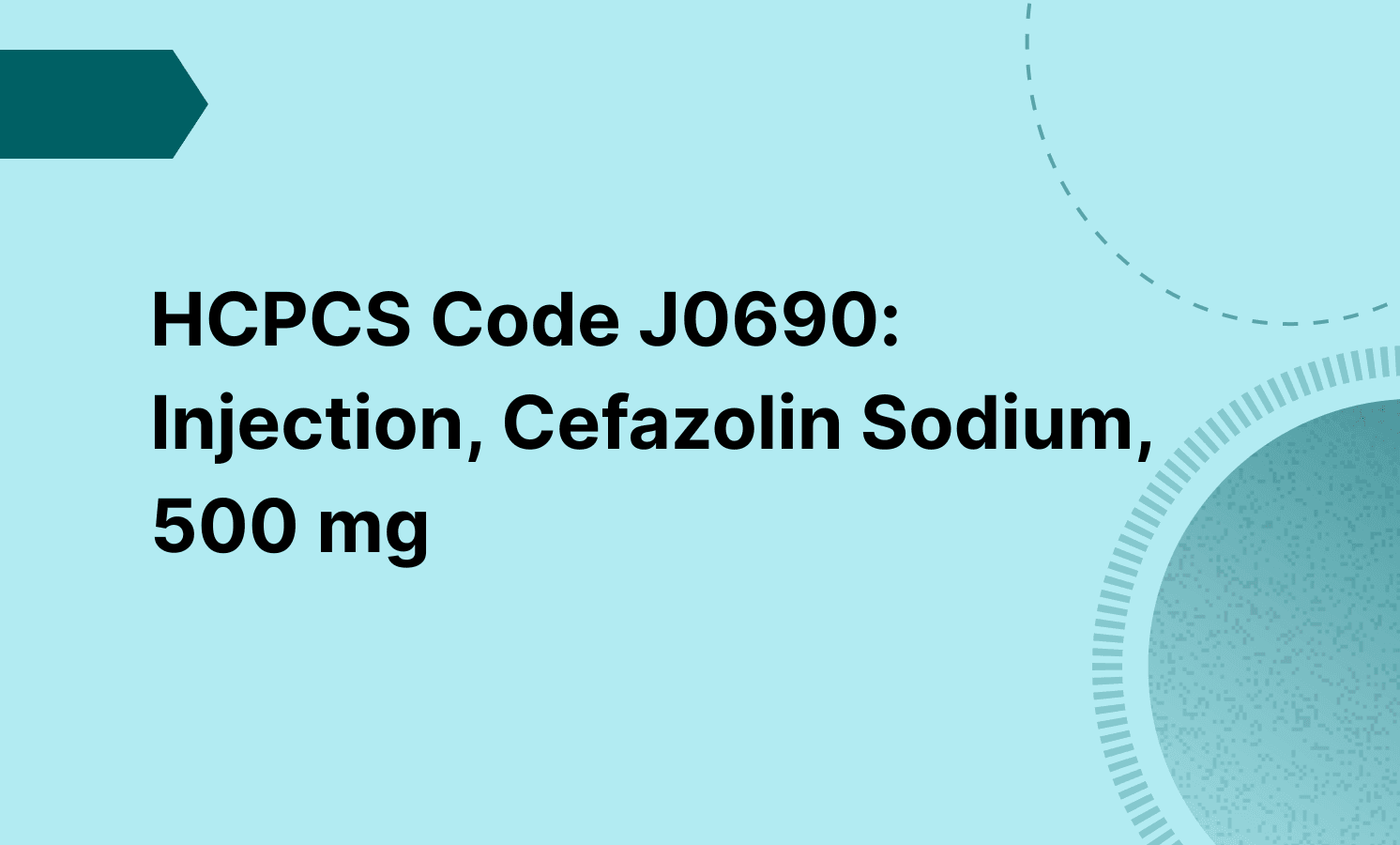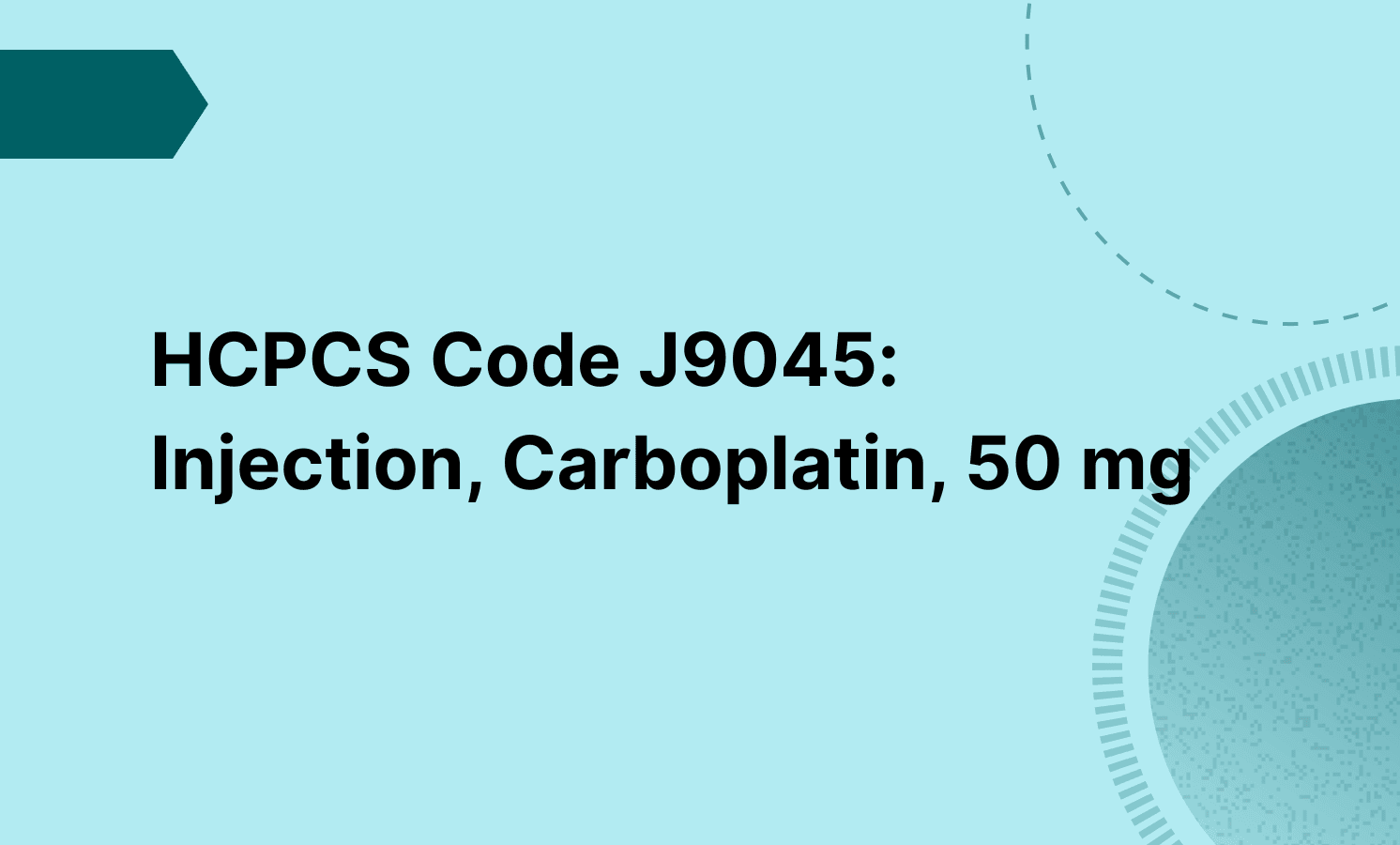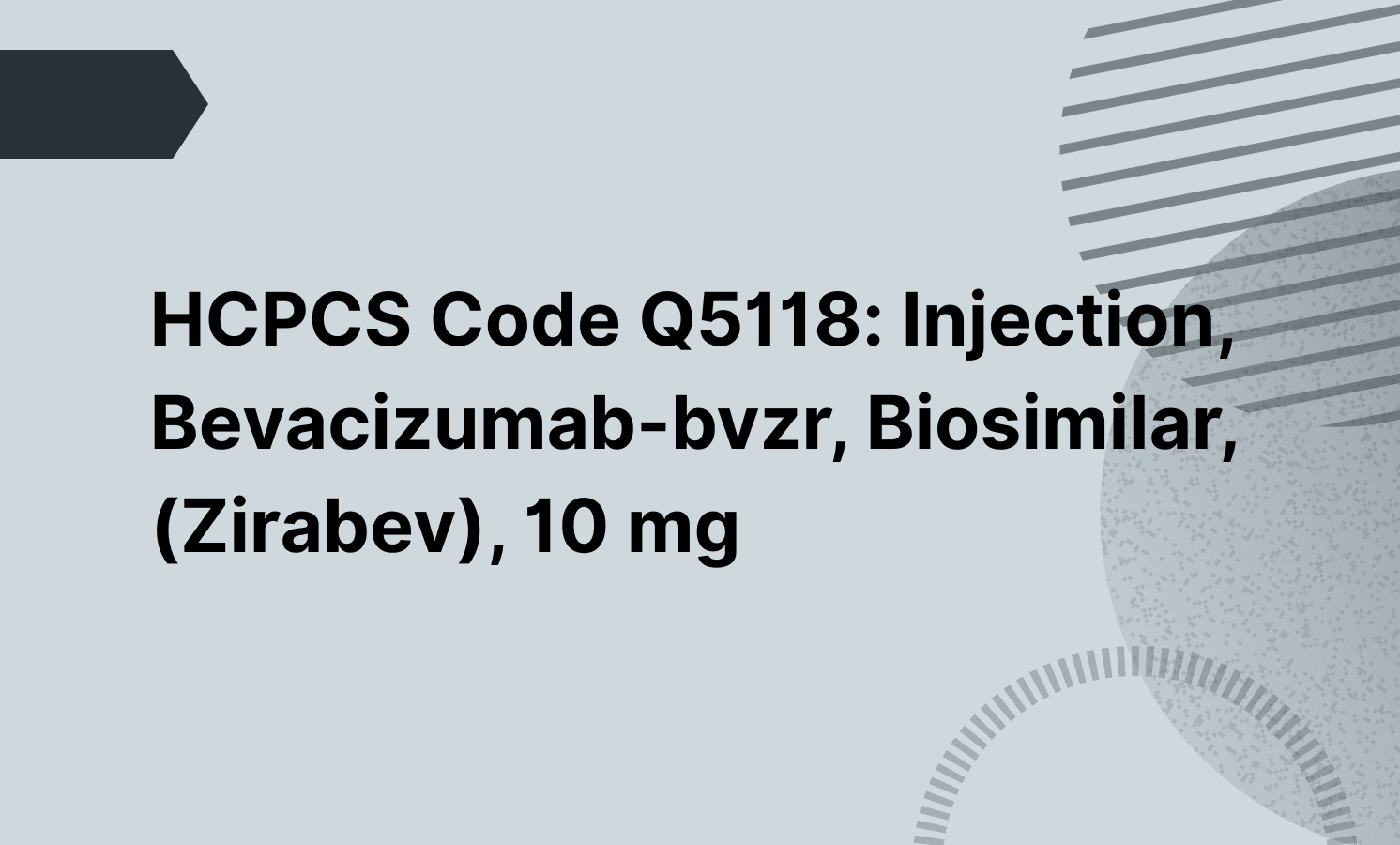Yes, you can report CPT code 12001 with an E/M code if the evaluation is separately documented and medically necessary. Append modifier -25 to the E/M code to indicate that the evaluation and management service is distinct from the laceration repair procedure.
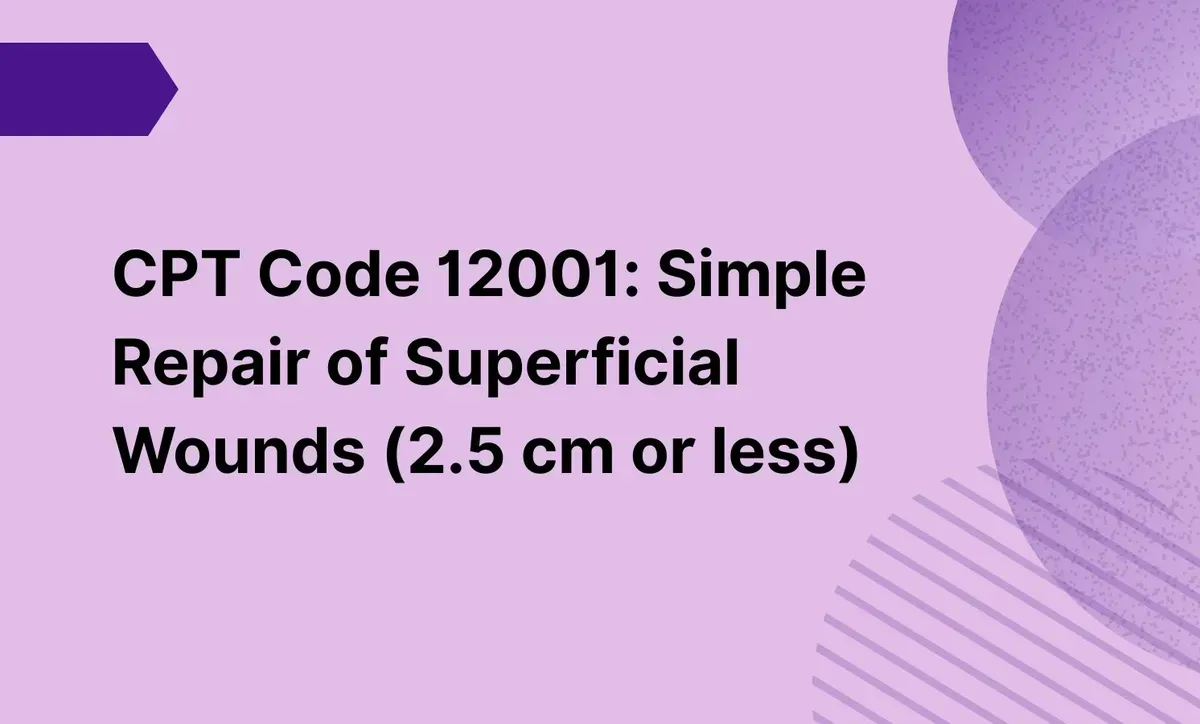
CPT Code 12001: Simple Repair of Superficial Wounds (2.5 cm or less)
Learn about CPT 12001 for simple wound repair, including key documentation, billing tips, and coding FAQs.
Frequently asked questions
When performing multiple simple repairs, add the lengths of all wounds within the same anatomic location (e.g., trunk and/or extremities) and choose the appropriate simple repair code based on the combined wound length. This ensures accurate billing and aligns with wound repair coding guidelines.
Yes, closure using tissue adhesives like Dermabond is included under CPT code 12001. It is considered a simple repair when it involves superficial wounds and does not require closure of subcutaneous tissue or deeper structures.
EHR and practice management software
Get started for free
*No credit card required
Free
$0/usd
Unlimited clients
Telehealth
1GB of storage
Client portal text
Automated billing and online payments


